- Home
- Dan Simmons
Worlds Enough & Time Page 22
Worlds Enough & Time Read online
Page 22
“Hey!” shouted Gary. “I’m a fucking giant!” He was flapping his arms and staring toward Sinkiang and the Godwin-Austen Glacier miles below us.
Altitude’s got him, I thought. We’ll have to sedate him, tie him in his sleeping bag, and drag him down the way we came like so much laundry.
“Come on!” Gary shouted to me in the high, cold air. “Be a giant, Jake.” He continued flapping his arms. I turned to look behind me and Paul and Karakaredes were also hopping up and down, carefully so as not to fall off the foot-wide ridgeline, shouting and flapping their arms. It was quite a sight to see K moving his mantisy forearms six ways at once, joints swiveling, boneless fingers waving like big grubs.
They’ve all lost it, I thought. Oxygen deprivation lunacy. Then I looked down and east.
Our shadows leaped out miles across the glacier and the neighboring mountains. I raised my arms. Lowered them. My shadow atop the dark line of ridge shadow raised and lowered shadow-arms that must have been ten miles tall.
We kept this up—jumping shouting, waving—until the sun set behind Broad Peak to the west and our giant selves disappeared forever.
Camp Six—narrow bench on snow dome below summit pyramid, 26,200 feet
No conversation or talk of listening to songs now. No jumping or shouting or waving. Not enough oxygen here to breathe or think, much less fuck around.
Almost no conversation the last three days or nights as we climbed the last of the broadening North-East Ridge to where it ended at the huge snow dome, then climbed the snow dome itself. The weather stayed calm and clear—incredible for this late in the season. The snow was deep because of the storm that had pinned us down at Camp Three, but we took turns breaking trail—an exhausting job at 10,000 feet, literally mind-numbing above 25,000 feet.
At night, we didn’t even bother merging our tents—just using our own segments like bivvy bags. We only heated one warm meal a day—super-nutrient soup on the single stove (we’d left the other behind just beyond the knife-edge traverse, along with everything else we didn’t think we’d need in the last three or four days of climbing)—and chewed on cold n-bars at night before drifting off into a half-doze for a few cold, restless hours before stirring at three or four A.M. to begin climbing again by lamplight.
All of us humans had miserable headaches and high-altitude stupidity. Paul was in the worst shape—perhaps because of the frostbite scare way down during his first attempt at the traverse—and he was coughing heavily and moving sluggishly. Even K had slowed down, climbing mostly two-legged on this high stretch, and sometimes taking a minute or more before planting his feet.
Most Himalayan mountains have ridges that go all the way to the summit. Not K2. Not this North-East Ridge. It ended at a bulging snow dome some 2,000 feet below the summit.
We climbed the snow dome—slowly, stupidly, sluggishly, separately. No ropes or belays here. If anyone fell to his death, it was going to be a solitary fall. We did not care. At and above the legendary 8,000 meter line, you move into yourself and then—often—lose even yourself.
We had not brought oxygen, not even the light osmosis booster-mask perfected in the last decade. We had one of those masks—in case any of us became critically ill from pulmonary edema or worse—but we’d left the mask cached with the stove, most of the rope, and other extra supplies above Camp Four. It had seemed like a good idea at the time.
Now all I could think about was breathing. Every move—every step—took more breath than I had, more oxygen than my system owned. Paul seemed in even worse shape, although somehow he kept up. Gary was moving steadily, but sometimes he betrayed his headaches and confusion by movement or pause. He had vomited twice this morning before we moved out from Camp Six. At night, we startled awake after only a minute or two of half-sleep—gasping for air, clawing at our own chests, feeling as if something heavy was lying on us and someone was actively trying to suffocate us.
Something was trying to kill us here. Everything was. We were high in the Death Zone and K2 did not care one way or the other if we lived or died.
The good weather had held, but high wind and storms were overdue. It was the end of August. Any day or night now we could be pinned down up here for weeks of unrelenting storm—unable to climb, unable to retreat. We could starve to death up here. I thought of the red panic button on the palmlog.
We had told Kanakaredes about the panic button while we heated soup at Camp Five. The mantispid had asked to see the extra palmlog with the emergency beacon. Then he had thrown the palmlog out the tent entrance, into the night, over the edge.
Gary had looked at our bug for a long minute and then grinned, extending his hand. K’s foreleg had unfolded, the mantis part swiveling, and those three fingers had encircled Gary’s hand and shaken it.
I had thought this was rather cool and heroic at the time. Now I just wished we had the goddamned panic button back.
We stirred, got dressed, and started heating water for our last meal shortly after 1:30 A.M. None of us could sleep anyway and every extra hour we spent up here in the Death Zone meant more chance to die, more chance to fail. But we were moving so slowly that tugging our boots on seemed to take hours, adjusting our crampons took forever. We moved away from the tents sometime after three A.M. We left the tents behind at Camp Six. If we survived the summit attempt, we’d be back.
It was unbelievably cold. Even the thermskins and smart outer parkas failed to make up the difference. If there had been a wind, we could not have continued.
We were now on what we called Direct Finish—the top or bust—although our original fallback plan had been to traverse across the face of K2 to the oldest route up the northwest Abruzzi Ridge if Direct Finish proved unfeasible. I think that all three of us had suspected we’d end up on the Abruzzi—most of our predecessors climbing the North-East Ridge had ended up doing so, even the legendary Reinhold Messner, perhaps the greatest climber of the 20th Century, had been forced to change his route to the easier Abruzzi Ridge rather than suffer failure on the Direct Finish.
Well, by early afternoon of what was supposed to have been our summit day, Direct Finish now seems impossible and so does the traverse to the Abruzzi. The snow on the face of K2 is so deep that there is no hope of traversing through it to the Abruzzi Ridge. Avalanches hurtle down the face several times an hour. And above us—even deeper snow. We’re fucked.
The day had started well. Above the almost vertical snowdome on which we’d hacked out a wide enough bench to lodge Camp Six, rose a huge snowfield that snaked up and up toward the black, star-filled sky until it became a wall. We climbed slowly, agonizingly, up the snowfield, leaving separate tracks, thinking separate thoughts. It was getting light by the time we reached the end of the snow ramp.
Where the snowfield ended a vertical ice cliff began and rose at least a hundred and fifty feet straight up. Literally fucking vertical. The four of us stood there in the morning light, three of us rubbing our goggles, looking stupidly at the cliff. We’d known it was there. We’d had no idea what a bitch it was going to be.
“I’ll do the lead,” gasped Paul. He could barely walk.
He free-climbed the fucker in less than an hour, slamming in pitons and screws and tying on the last of our rope. When the three of us climbed slowly, stupidly up to join him, me bringing up the rear just behind K, Paul was only semiconscious.
Above the ice cliff rose a steep rock band. It was so steep that snow couldn’t cling there. The rock looked rotten—treacherous—the kind of fragile crap that any sane climber would traverse half a day to avoid.
There would be no traverse today. Any attempt to shift laterally on the face here would almost certainly trigger an avalanche in the soft slabs of snow overlaying old ice.
“I’ll lead,” said Gary, still looking up at the rock band. He was holding his head with both hands. I knew that Gary always suffered the worst of the Death Zone headaches that afflicted all three of us. For four or five days and nights now, I knew, every wo
rd and breath had been punctuated by slivers of steel pain behind the eyes for Gary.
I nodded and helped Paul to his feet. Gary began to climb the lower strata of crumbling rock.
We reached the end of the rock by midafternoon. The wind is rising. A spume of spindrift blows off the near-vertical snow and ice above us. We cannot see the summit. Above a narrow coloir that rises like a chimney to frigid hell, the summit-pyramid snowfield begins. We’re somewhere above 27,000 feet.
K2 is 28,250 feet high.
That last twelve hundred feet might as well be measured in light-years.
“I’ll break trail up the coloir,” I hear myself say. The others don’t even nod, merely wait for me to begin. Kanakaredes is leaning on his ice axe in a posture I’ve not seen before.
My first step up the coloir sends me into snow above my knees. This is impossible. I would weep now, except that the tears would freeze to the inside of my goggles and blind me. It is impossible to take another step up this steep fucking gully. I can’t even breathe. My head pounds so terribly that my vision dances and blurs and no amount of wiping my goggles will clear it.
I lift my ice axe, slam it three feet higher, and lift my right leg. Again. Again.
Summit pyramid snowfield above the coloir, somewhere around 27,800 feet
Late afternoon. It will be almost dark when we reach the summit. If we reach the summit.
Everything depends upon the snow that rises above us toward the impossibly dark blue sky. If the snow is firm—nowhere as mushy and deep as the thigh-high soup I broke trail through all the way up the coloir—then we have a chance, although we’ll be descending in the dark.
But if it’s deep snow…
“I’ll lead,” said Gary, shifting his small summit-pack on his back and slogging slowly up to replace me in the lead. There is a rockband here at the top of the narrow coloir and he will be stepping off it either into or onto the snow. If the surface is firm, we’ll move onto it, using our crampons to kick-step our way up the last couple of hours of climb to the summit—although we still cannot see the summit from here.
I try to look around me. Literally beneath my feet is a drop to the impossibly distant knife-edge, far below that the ridge where we put Camp Two, miles and miles lower the curving, rippled river of Godwin-Austen and a dim memory of Base Camp and of living things—lichen, crows, a clump of grass where the glacier was melting. On either side stretches the Karakoram, white peaks thrusting up like fangs, distant summits merging into the Himalayan peaks, and one lone peak—I’m too stupid to even guess which one—standing high and solitary against the sky. The red hills of China burn in the thick haze of breathable atmosphere a hundred miles to the north.
“Okay,” says Gary, stepping off the rock onto the snowfield.
He plunges in soft snow up to his waist.
Somehow Gary finds enough breath to hurl curses at the snow, at any and all gods who would put such deep snow here. He lunges another step up and forward.
The snow is even deeper. Gary founders almost up to his armpits. He slashes at the snowfield with his ice axe, batters it with his overmittens. The snowfield and K2 ignore him.
I go to both knees on the pitched rock band and lean on my ice axe, not caring if my sobs can be heard by the others or if my tears will freeze my eyelids open. The expedition is over.
Kanakaredes slowly pulls his segmented body up the last ten feet of the coloir, past Paul where Paul is retching against a boulder, past me where I am kneeling, onto the last of the solid surface before Gary’s sliding snowpit.
“I will lead for a while,” says Kanakaredes. He sets his ice axe into his harness. His prothorax shifts lower. His hind legs come down and out. His arms—forelegs—rotate down and forward.
Kanakaredes thrusts himself into the steep snowfield like an Olympic swimmer diving off the starting block. He passes Gary where Gary lies armpit-deep in the soft snow.
The bug—our bug—flails and batters the snow with his forearms, parts it with his cupped fingers, smashes it down with his armored upper body segment, swims through the snow with all six legs paddling.
He can’t possibly keep this up. It’s impossible. Nothing living has that much energy and will. It is seven or eight hundred near-vertical feet to the summit.
K swims-kicks-fights his way fifteen feet up the slope. Twenty-five. Thirty.
Getting to my feet, feeling my temples pounding in agony, sensing invisible climbers around me, ghosts hovering in the Death Zone fog of pain and confusion, I step past Gary and start postholing upward, following K’s lead, struggling and swimming up and through the now-broken barrier of snow.
Summit of K2, 28,250 feet
We step onto the summit together, arm in arm. All four of us. The final summit ridge is just wide enough to allow this.
Many 8,000-meter-peak summits have overhanging cornices. After all this effort, the climber sometimes takes his or her final step to triumph and falls for a mile or so. We don’t know if K2 is corniced. Like many of these other climbers, we’re too exhausted to care. Kanakaredes can no longer stand or walk after breaking trail through the snowfield for more than six hundred feet. Gary and I carry him, the last hundred feet or so, our arms under his mantis arms. I am shocked to discover that he weighs almost nothing. All that energy, all that spirit, and K probably weighs no more than a hundred pounds.
The summit is not corniced. We do not fall.
The weather has held, although the sun is setting. Its last rays warm us through our parkas and thermskins. The sky is a blue deeper than cerulean, much deeper than topaz, incomparably deeper than aquamarine. Perhaps this shade of blue has no word to describe it.
We can see to the curve of the earth and beyond. Two peaks are visible above that curving horizon, their summit icefields glowing orange in the sunset, a great distance to the northeast, probably somewhere in Chinese Turkestan. To the south lies the entire tumble of overlapping peaks and winding glaciers that is the Karakoram. I make out the perfect peak that is Nanga Parbat—Gary, Paul, and I climbed that six years ago—and closer, the Gasherbrums. At our feet, literally at our feet, Broad Peak. Who would have thought that its summit looked so wide and flat from above?
The four of us are all sprawled on the narrow summit, two feet from the sheer dropoff on the north. My arms are still around Kanakaredes, ostensibly propping him up but actually propping both of us up.
The mantispid clicks, hisses, and squeeks. He shakes his beak and tries again. “I am…sorry,” he gasps, the air audibly hissing in and out of his beak nostrils. “I ask…traditionally, what do we do now? Is there a ceremony for this moment? A ritual required?”
I look at Paul, who seems to be recovering from his earlier inertia. We both look at Gary.
“Try not to fuck up and die,” says Gary between breaths. “More climbers die during the descent than on the way up.”
Karakaredes seems to be considering this. After a minute he says, “Yes, but here on the summit, there must be some ritual…”
“Hero photos,” gasps Paul. “Gotta…have…hero photos.”
Our alien nods. “Did…anyone…bring an imaging device? A camera? I did not.”
Gary, Paul, and I look at each other, pat our parka pockets, and then start laughing. At this altitude, our laughter sounds like three sick seals coughing.
“Well, no hero photos,” says Gary. “Then we have to haul the flags out. Always bring a flag to the summit, that’s our human motto.” This extended speech makes Gary so light-headed that he has to put his head between his raised knees for a minute.
“I have no flag,” says Kanakaredes. “The Listeners have never had a flag.” The sun is setting in earnest now, the last rays shining between a line of peaks to the west, but the reddish-orange light glows brightly on our stupid, smiling faces and mittens and goggles and ice-crusted parkas.
“We didn’t bring a flag either,” I say.
“This is good,” says K. “So there is nothing else we need to d
o?”
“Just get down alive,” says Paul.
We rise together, weaving a bit, propping one another up, retrieve our ice axes from where we had thrust them into the glowing summit snow, and begin retracing our steps down the long snowfield into shadow.
Godwin-Austen Glacier, about 17,300 feet
It took us only four and a half days to get down, and that included a day of rest at our old Camp Three on the low side of the knife-edge traverse.
The weather held the whole time. We did not get back to our high camp—Camp Six below the ice wall—until after three A.M., after our successful summit day, but the lack of wind had kept our tracks clear even in lamplight and no one slipped or fell or suffered frostbite.
We moved quickly after that, leaving just after dawn the next day to get to Camp Four on the upper end of the knife-edge before nightfall…and before the gods of K2 changed their minds and blew up a storm to trap us in the Death Zone.
The only incident on the lower slopes of the mountain happened—oddly enough—on a relatively easy stretch of snowslope below Camp Two. The four of us were picking our way down the slope, unroped, lost in our own thoughts and in the not-unpleasant haze of exhaustion so common near the end of a climb, when K just came loose—perhaps he tripped over one of his own hindlegs, although he denied that later—and ended up on his stomach—or at least the bottom of his upper shell, all six legs spraddled, ice axe flying free, starting a slide that would have been harmless enough for the first hundred yards or so if it had not been for the drop-off that fell away to the glacier still a thousand feet directly below.
Luckily, Gary was about a hundred feet ahead of the rest of us and he dug in his axe, looped a line once around himself and twice around the axe, timed K’s slide perfectly, and then threw himself on his belly out onto the ice slope, his reaching hand grabbing Kanakaredes’s three fingers as slick as a pair of aerial trapeze partners. The rope snapped taut, the axe held its place, man and mantispid swung two and a half times like the working end of a pendulum, and that was the end of that drama. K had to make it the rest of the way to the glacier without an ice axe the next day, but he managed all right. And we now know how a bug shows embarrassment—his occipital ridges blush a dark orange.

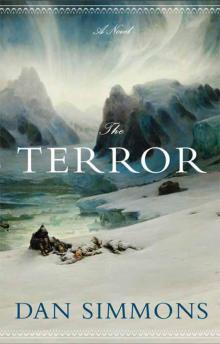 The Terror
The Terror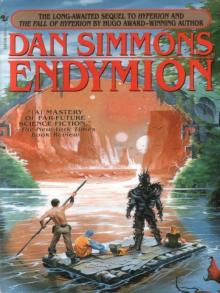 Endymion
Endymion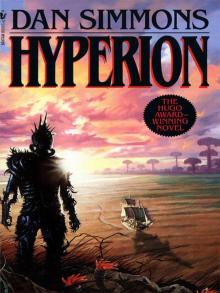 Hyperion
Hyperion The Crook Factory
The Crook Factory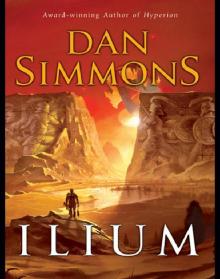 Ilium
Ilium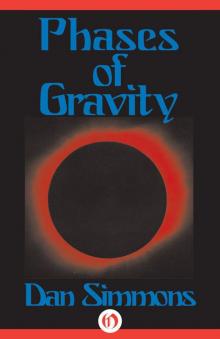 Phases of Gravity
Phases of Gravity Hardcase
Hardcase Fires of Eden
Fires of Eden Children of the Night
Children of the Night Muse of Fire
Muse of Fire Drood
Drood The Fifth Heart
The Fifth Heart Carrion Comfort
Carrion Comfort The Hollow Man
The Hollow Man Summer of Night
Summer of Night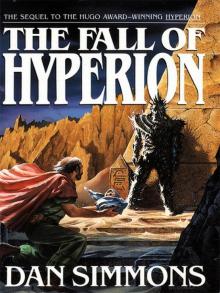 The Fall of Hyperion
The Fall of Hyperion Black Hills
Black Hills A Winter Haunting
A Winter Haunting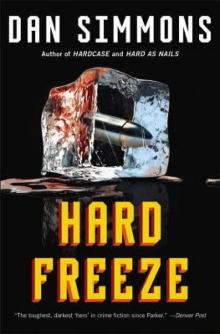 Hard Freeze
Hard Freeze Prayers to Broken Stones
Prayers to Broken Stones Hard as Nails
Hard as Nails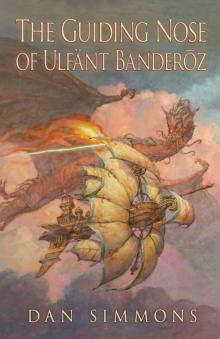 The Guiding Nose of Ulfant Banderoz
The Guiding Nose of Ulfant Banderoz The Rise of Endymion
The Rise of Endymion Orphans of the Helix
Orphans of the Helix Lovedeath
Lovedeath Olympos
Olympos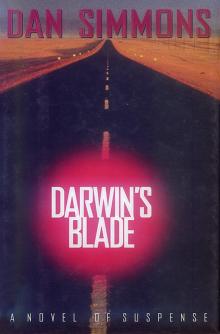 Darwin's Blade
Darwin's Blade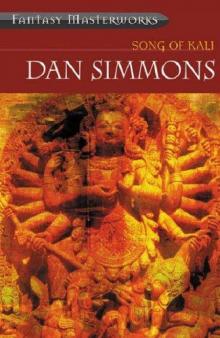 Song of Kali
Song of Kali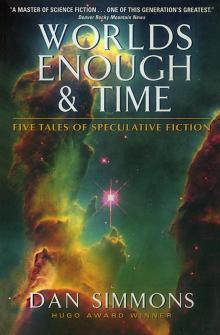 Worlds Enough & Time: Five Tales of Speculative Fiction
Worlds Enough & Time: Five Tales of Speculative Fiction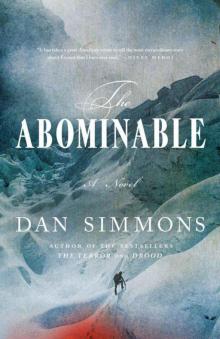 The Abominable
The Abominable The Death of the Centaur
The Death of the Centaur Hard as Nails jk-3
Hard as Nails jk-3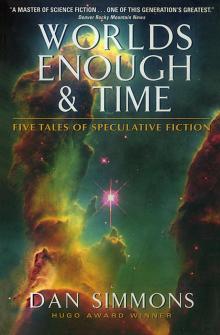 Worlds Enough & Time
Worlds Enough & Time Joe Kurtz Omnibus
Joe Kurtz Omnibus The Hyperion Cantos 4-Book Bundle
The Hyperion Cantos 4-Book Bundle Rise of Endymion
Rise of Endymion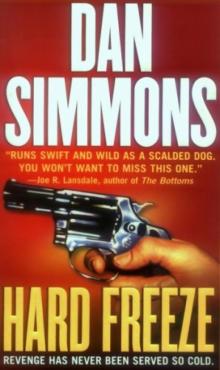 Hard Freeze jk-2
Hard Freeze jk-2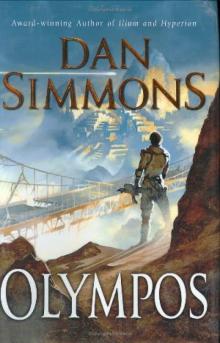 Olympos t-2
Olympos t-2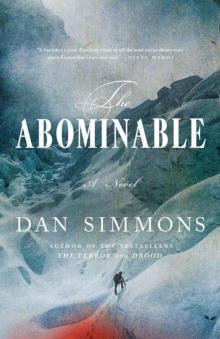 The Abominable: A Novel
The Abominable: A Novel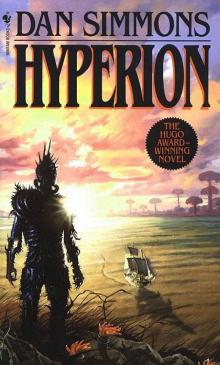 Hyperion h-1
Hyperion h-1 Remembering Siri
Remembering Siri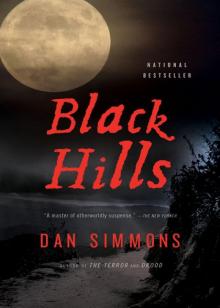 Black Hills: A Novel
Black Hills: A Novel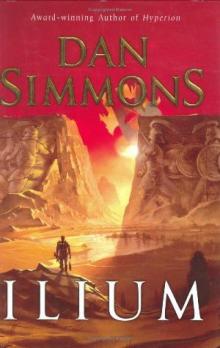 Ilium t-1
Ilium t-1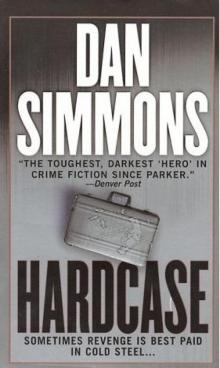 Hardcase jk-1
Hardcase jk-1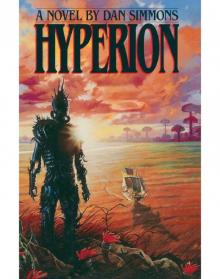 Hyperion 01 - Hyperion
Hyperion 01 - Hyperion